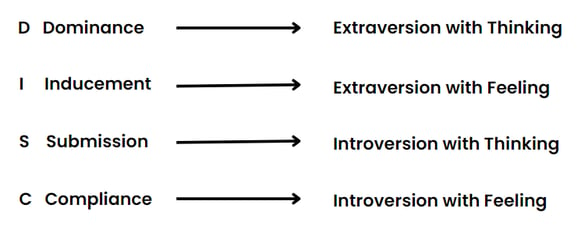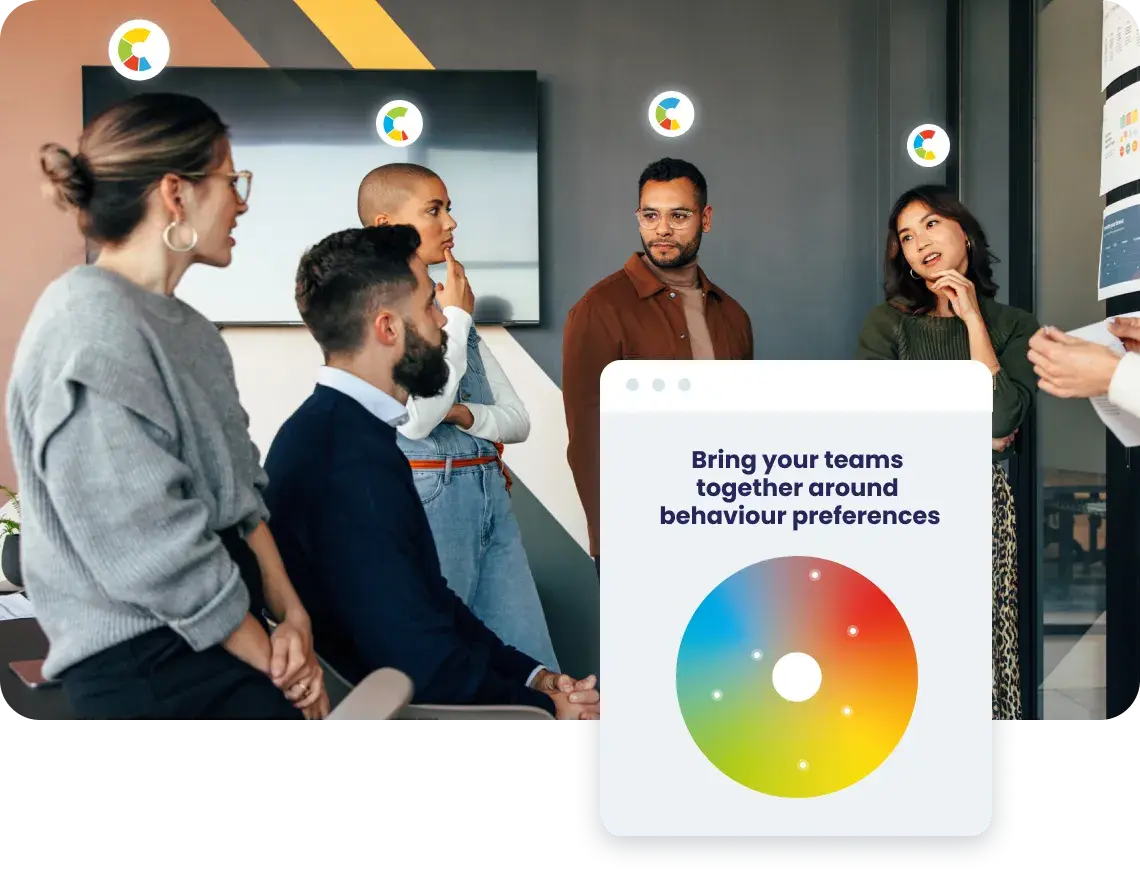
Accurate personality assessments: Discover yourself
Have you ever wondered which personality traits define you as an individual, or how well you truly know yourself? In this comprehensive guide, we will delve into the fascinating world of personality tests, exploring various types, their applications in diverse domains such as the workplace and education, potential benefits and pitfalls, and tips for interpretation. Buckle up as we embark upon an exciting voyage to uncover the mysteries of your innermost persona!
What is a Personality Test?
A personality test is a psychological assessment designed to measure distinct aspects of an individual’s character by evaluating their patterns of thoughts, feelings, and behaviours. These tests are based on years of historical theories and knowledge that have repeatedly identified various personality traits. Often presented in the form of questionnaires or quizzes, they serve as powerful tools for discovering one’s strengths, weaknesses, attitudes, and preferences.
Understanding one’s core persona offers numerous advantages across the personal and professional spheres – from making informed career choices to enhancing interpersonal relationships with colleagues, friends or partners. Whether administered online or in a clinical setting under expert guidance, these tests represent invaluable resources designed to foster growth through enhanced self-awareness.
History of Personality Tests
The concept of personality assessments dates back to ancient civilisations, as evidenced by the writings of renowned philosophers such as Hippocrates and Aristotle. These early thinkers developed rudimentary theories on human temperaments, setting the groundwork for what we now know as personality tests. In order to contextualise the history of these assessments, let’s delve into important milestones throughout their development.
Early Theories of Temperament
Hippocrates (460 - 370 B.C.E.) postulated that human behaviours were influenced by four humours: yellow bile, black bile, phlegm, and blood. He argued that an imbalance in these bodily fluids would result in varying temperaments known as choleric, melancholic, phlegmatic, and sanguine. Later on, Galen (129 – c. 216 AD), a prominent physician and philosopher further expanded upon this theory by connecting these temperaments to certain physical characteristics.
Carl Jung’s Psychological Types
Fast forward to the 20th century; Swiss psychiatrist and psychoanalyst Carl Jung (1875-1961) who developed ‘analytical psychology’ Jung published his book Psychological Types in 1921 (in German),which introduced a theory of four main operations of consciousness:
.
- Two perceiving or non-rational functions - Sensation and Intuition
- Two judging or rational functions - Thinking and Feeling
- These functions are modified by two main attitude types - Extraversion and Introversion
Although not intended to be a personality test per se, Jung’s ground-breaking work laid the foundation for many modern-day personality assessments.
Development of Scientifically Based Assessments
Psychologist Raymond Cattell was a key figure in creating one of the first personality tests based upon extensive empirical research: The 16 Personality Factor Questionnaire (16PF) in 1946 (with later iterations). This quantitative assessment analysed individual traits across distinct dimensions derived from factor analysis—a statistical method used to study patterns within datasets—which proved instrumental in establishing credible and reliable approaches towards understanding human personalities.
Emergence of Modern-Day Personality Assessments
As time went on more psychologists developed their own tools for assessing personalities. Here are two of the most well known.
In 1928 William Moulton Marston published his book “The Emotions of Normal People”, where he used other language to describe the different Jungian quadrants – the four elements:

These form the basis of the DISC system. The Jung terms were not directly quoted by Marston but map easily on to his grid. Modern systems use the terms Dominance, Influence, Steadiness, Conscientiousness.
The Myers-Briggs Type Indicator (MBTI) was published in 1962 by the mother and daughter team Katherine Briggs and Isabel Briggs-Myers. They described it as a psychometric questionnaire to describe preferences in how we see the world and how we make decisions. It is based closely on the Jung preferences but with the addition of Judging and Perception. The four axis are described as dichotomies:
These are displayed as 16 personality types (see grid below). The percentages in the population of each MB type are shown. (Data collected by The Myers & Briggs Foundation.)

Technology-based Testing
The 1990s saw the application of computer technology to a wide range of systems, although paper-based questionnaires were still the norm. Several installable software programmes became available and technology-enabled us to widely customise the reports. As a result, previously generic reports became more individualised.
Job matching was still a popular use, where questionnaires were used to define a role for the employer matched to the potential employee’s traits.
Systems became more user-friendly as some companies added symbols and colours to help explain aspects of behaviour. Yellow was a popular choice for Extraverted Thinking with light bulbs or the sun used as a corresponding symbol.
Belbin's approach describes nine personality types in their Team Role Inventory (also known as Self-Perception Inventory, BSPI or BTRI). It looks at how an individual behaves in a team environment.
Their test gives individuals a percentage showing how well they are matched with each team role, from least preferred to most preferred. The two most preferred roles gave the label for the individuals’ behaviour. You could be a Specialist + Completer Finisher, for example, or a Shaper + Monitor Evaluator.
Insights' approach distributed American DISC software for several years before producing their Discovery software, changing the emphasis from DISC to Jung. They used eight types, again using two names; you could be a Reforming Director or a Directing Reformer. The system went deeper, adding Focused, Classic and Flexible within each of these roles. The types on the Insights wheel numbered 1-156.
All these systems have excellent features and different views of the best way to analyse and present information.
In summary, through time-honoured theories, empirical research, and continuous advancements we have arrived at an array of assessment options tailored towards unveiling aspects of our personalities, which are instrumental for both personal development and understanding different interpersonal dynamics across various contexts that span from workplace to education.

Types of Personality Tests
The world of personality assessments is diverse, offering various methods to evaluate and interpret one’s psychological makeup. Here are five prominent types of personality tests:
1. Myers-Briggs Type Indicator
Easily one of the most well-known and popular personality quizzes available today is the Myers-Briggs Type Indicator (MBTI). From Carl Jung’s psychological theories, this assessment focuses on four key aspects:
- Extraversion vs. Introversion (E/I): preference for people, and things or ideas and reflection.
- Sensing vs. Intuition (S/N): a preference for tangible and concrete details and facts or a preference for trusting information that is less dependent upon the senses and on abstract concepts when processing data.
- Thinking vs. Feeling (T/F): a logical or emotional approach in decision-making.
- Judging vs. Perceiving (J/P): propensity towards the Judging function (thinking and feeling) or the Perceiving function (sensing and intuition) when relating to the outside world.
The combination of these dimensions results in 16 distinct personality types, each represented by a unique set of letters.
2. 16 Personality Factor Questionnaire
Delving into broader aspects of human behaviour and psychology is the extensive types-of-personality assessment called the 16 Personality Factor Questionnaire (16PF). Developed by Raymond Cattell using factor analysis methodology, it assesses individuals across 16 dimensions:
- Abstractedness: Imaginative versus practical
- Apprehension: Worried versus confident
- Dominance: Forceful versus submissive
- Emotional stability: Calm versus high-strung
- Liveliness: Spontaneous versus restrained
- Openness to change: Flexible versus attached to the familiar
- Perfectionism: Controlled versus undisciplined
- Privateness: Discreet versus open
- Reasoning: Abstract versus concrete
- Rule-consciousness: Conforming versus non-conforming
- Self-reliance: Self-sufficient versus dependent
- Sensitivity: Tender-hearted versus tough-minded
- Social boldness: Uninhibited versus shy
- Tension: Inpatient versus relaxed
- Vigilance: Suspicious versus trusting
- Warmth: Outgoing versus reserved
List rom Very Well Mind “Cattell’s 16 Personality Factors".
3. Factor Model (FFM) or Big Five
The Big Five personality traits represent a classification system for personality traits. It originated in the 1980s and has been developed further in psychological trait theory. From the 1990s onward, this theory identified five factors commonly referred to as:
- Openness to experience (characterized by curiosity and inventiveness versus being cautious and consistent)
- Conscientiousness (involving efficiency and organization versus extravagance and carelessness)
- Extraversion (describing outgoing and energetic qualities versus solitary and reserved tendencies)
- Agreeableness (referring to friendliness and compassion versus being critical and rational)
- Neuroticism (relating to sensitivity and nervousness versus resilience and confidence)
By applying factor analysis to personality surveys, researchers have found that certain words used to describe aspects of personality often go together. For instance, a conscientious individual is more likely to be described as "always prepared" rather than "messy." These associations indicate five broad dimensions that are commonly used in everyday language to describe human personality, temperament, and psyche.
Beneath each primary factor, there are several correlated and more specific sub-factors. For example, extraversion is typically associated with traits such as gregariousness, assertiveness, excitement-seeking, warmth, activity, and positive emotions. It's important to note that these traits exist on a continuum rather than being absolute and rigid categories.
4. DISC Personality Test
The modern version of the DISC test measures four primary behaviour types:
- Dominance (D): an individual’s assertiveness, control over situations, and decisiveness.
- Influence (I): communication skills, persuasiveness, and social confidence in group or one-on-one settings.
- Steadiness (S): reliability, patience, consistency, and cooperativeness when working with others.
- Conscientiousness (C): attention to detail, accuracy in work output, adherence to rules.
The DISC test maps these four behaviour types to four colours: red, yellow, green, blue as an easier way to remember the behaviour types visually. Alternative versions of the test assign the colours differently.
5. Emotional Intelligence Tests
Emotional intelligence plays a significant role in shaping how we interact with others – both professionally and personally. Assessments such as the EQ-i 2.0 evaluate emotional intelligence on numerous factors such as:
- Self-Perception
- Self-Expression
- Interpersonal
- Decision Making
- Stress Management
Unlike other psychological personality tests that focus mainly on developed traits entrenched throughout your life journey so far - emotional intelligence tests consider adaptive behaviours that could increase as you actively improve those skills through intentional practice efforts over time.

Uses of Personality Tests
Personality tests have a wide range of applications, from the workplace to education and personal development. These assessments can provide valuable insights into an individual’s personality traits, preferences, strengths, and weaknesses. By understanding these aspects of personality, individuals and organisations can make more informed decisions about career paths, work environments, learning styles, and personal growth strategies.
In the Workplace
In the corporate world, personality assessments play a crucial role in various aspects of organisational success. Some common uses of personality tests in the workplace include:
- Recruitment: Personality tests are a valuable addition to recruitment process because they give more insight to a candidate than can be taken from a CV. However, best practice within the recruitment industry is that they are not used to directly indicate a candidate’s suitability for the job in the early stages of the recruitment timeline, but more that they should be considered later in the timeline to provide additional information about how the candidate would approach their role and interact with company culture.
- Team building: Organisations can benefit from assessments like DISC Personality Test or Myers-Briggs Type Indicator (MBTI) to create balanced teams that complement each other’s strengths and weaknesses.
- Leadership development: Personality tests can help identify potential leaders within a company and guide their professional growth through targeted training programs.
- Conflict resolution: Uncovering the underlying reasons behind conflicts in the workplace can be achieved by administering tools like emotional intelligence tests or behavioural preferences assessments, which facilitate better communication between colleagues.
In Education
Educational institutions utilise personality questionnaires for various objectives aimed at enhancing student experiences and outcomes. Among these purposes are:
-
- Career guidance: Secondary schools, colleges and universities sometimes employ personality testing in counselling students regarding potential career avenues suited to their aptitudes and interests.
- Preparation for working life: personality assessments can be useful for helping young people understand their own motivations and preferences (how they best work and what their strengths and areas for development are). It is also very beneficial for them to understand how others, who are very different to themselves, are motivated. Growing an early appreciation for why others behave the way they do, and then how to work best with them, is a great asset in the working life.
In Personal Development
Individuals often seek out self-assessments as part of their personal growth journey. The following are key benefits to using personality assessments for self-discovery:
-
- Self-awareness: Taking a personality test can help individuals gain a deeper understanding of their character, strengths, and weaknesses, fostering better self-awareness.
- Relationship management: Identifying the dynamics between oneself and others in areas such as communication styles and conflict resolution can contribute to improved relationships.
- Goal-setting and personal growth: Utilising information from psychological personality tests allows individuals to set meaningful goals based on their unique characteristics, aligning with their aspirations and potential.
In conclusion, personality assessments have many practical uses across several domains and much more.

Benefits of Taking a Personality Test
-
Taking a personality test is an engaging and insightful way to uncover numerous advantages that can significantly impact your personal, educational, and professional life. Let’s explore some of the most notable benefits you could expect from taking an accurate personality test.
-
Enhanced Self-Awareness
One of the most significant advantages of undergoing personality assessments is increased self-awareness. By gaining insight into your personality traits, strengths, weaknesses, and preferences, it becomes easier to make informed decisions about various aspects of your life, including career choices and interpersonal relationships.
Improved Communication Skills
Understanding your communication style using personality tests equips you with the ability to adapt effectively during interactions with others. Being aware of individual differences not only leads to productive conversations but also fosters better rapport among colleagues or team members.
Effective Conflict Resolution
There are many benefits to becoming more conscious of how you respond to different situations and the personality traits of others that you might find more difficult to deal with. For example, such information allows you to develop effective strategies for conflict resolution. This is powerful information that enables you to foster better relationships by addressing disputes amicably, because you can appreciate the diversity among individuals.
Informed Career Choices
Personality tests can streamline your decision making when it comes to selecting careers or roles that align best with your abilities and values. The insights gained through personality assessments enable individuals to identify positions where they are likely to excel and experience job more satisfaction.
Better Teamwork & Collaboration
Personality tests contribute positively towards teamwork within workplace environments. Employing such tools as part of personnel management can lead to more balanced teams wherein the unique skills brought together complement one another effectively.
In summary, integrating reliable personality tests into different aspects of our lives opens up incredible opportunities for personal growth. These evaluations offer a multitude of benefits, making them valuable tools for self-improvement

Potential Pitfalls of Taking a Personality Test
While personality tests can offer valuable insights into our strengths, weaknesses and preferences, they come with their own set of potential pitfalls. In this section, we will discuss some common concerns associated with personality assessments such as overreliance on test results, labelling people based on their personality profiles, ethical considerations in using these tools, and the potential for bias.
Overreliance on Test Results
It is important to be aware of putting too much emphasis on the test results. It’s crucial to remember that these tests should not be the sole basis for decision making—whether it involves career choices or interpersonal relationships. A personality test can provide helpful insights about your traits but it’s essential to remain mindful that we change and develop over time. They are a good mirror, but your opinion is important to filter the results and apply them in your life.
Labelling Based on Personality Profiles
We must avoid ‘boxing people in’ to one category, which may lead to stereotypes or mis-judgments about them. For example, grouping individuals by introversion or extraversion might unintentionally perpetuate expectations tied to such labels. Using personality tests responsibly means focusing more on self-awareness and growth rather than defining oneself or others within narrow predetermined categories.
Ethical Considerations
Confidentiality and informed consent are essential when administering any kind of assessment; anyone invited to take a personality assessment should have reasonable control over what information is being collected about them and how that data will be used.
Potential for Bias
Lastly, potential biases must be acknowledged while interpreting the results of any personality test, and even the best personality tests available - both from those taking part in surveys and those developing surveys themselves. Questionnaires may unintentionally include prejudices stemming from culture or language which could influence outcomes unfairly. Additionally, self-reporting biases have been identified as a potential issue in personality questionnaires; individual motivations to present oneself positively or negatively might skew results.
In conclusion, while personality assessments can offer useful insights, it is vital to recognize their limitations and approach them critically. Recognising these pitfalls helps ensure that you make the most of your experience with any given test, avoiding misconceptions and focus
on personal growth.

Tips for Taking a Personality Test
When embarking on the journey of self-discovery through personality assessments, it’s essential to approach the process thoughtfully. If you’re planning to take any of the popular tests mentioned above or one from an online resource, consider these tips which can help ensure valid results and enhance your understanding of yourself.
1. Consider The Context
Be clear about the purpose and context in which you are answering these questions. For example, are you answering in your work persona or are you answering about life outside of work? Take time to clarify the purpose of why you are taking the questionnaire.
2. Don’t over think it
Taking too long to decide what the ‘right’ answer is will stop you from giving your honest answer. Aim to give your first response. Personality tests are not looking for ‘right’ or ‘wrong’ answers but an honest picture of who you are, through the information you give.
3. Be Honest with Yourself
While taking a personality test, honesty is key. It might be tempting to answer questions based on what you perceive as an ideal response or in a way that aligns with society’s expectations, but doing so will not provide true insight into your character traits. Remember that the purpose of such assessments is personal growth, so being truthful about who you are will pave the way for genuine self-improvement.
4. Create Comfortable Conditions
Whether taking an online personality test or in person, choose a comfortable environment where distractions are minimised so you can fully focus on answering accurately.
5. Keep an Open Mind
Certain questions on personality assessments may lead you to evaluate traits or qualities that you perceive as negative, but it is essential to remember that each individual has strengths and weaknesses, making every character trait unique. Embrace these findings rather than dismissing them outright as ‘undesirable.’
6. Interpret Results With Caution
An accurate personality test can offer invaluable insights into your personality traits and tendencies; however, they are not infallible. Use the test results as a guide towards self-discovery, rather than definitive answers about who you are.
Incorporating these tips when taking a personality assessment will increase the likelihood of obtaining valid and informative results. Above all, always approach tests with curiosity and openness, ready to embrace learning more about yourself and unlocking your potential for growth in various life aspects – whether personal development, education or career prospects.

How to Interpret Your Results
Interpreting the results of your personality assessment can be an enlightening and potentially transformative experience. It may provide you with a deeper understanding of yourself, your strengths, weaknesses, and behavioural tendencies. To make the most out of this process, consider following these essential steps:
Examine the Test’s Purpose
Start by checking the purpose of the chosen test or questionnaire. Different personality tests explore different aspects, ranging from emotional intelligence to values alignment. Familiarising yourself with the framework will help you comprehend your results better. What is this test looking at?
Reflect on Your Responses
You should also reflect on the honesty and accuracy of your responses when taking the test. Doing so can help confirm that your results paint an accurate picture of your personality. If you were not completely truthful, or you had home life in mind when you were asked to reflect on your work life, it could affect how effective the assessment is at capturing your unique attributes.
Analyse Key Components
- Understand Profile Components: Personality assessments typically provide scores for several components related to traits, preferences, or work styles. To make this information most useful, think of examples of where you have seen these occur in your work or daily life and what the effect is on yourself and others.
- Look For Patterns: Identify recurring themes or patterns throughout your assessment report that consistently describe different areas of your personality. Again, ask yourself what this means for you? How could this effect a decision you have to make? How could this affect how you interact with others?
- Strengths and Weaknesses: By analysing identified patterns and key components, determine which ones reveal potential strengths or areas for growth in personal development. The next step is to write an action plan of what you want to do with these results? Who could you tell? Who could help you create a plan?
Compare With Other Sources
Cross-comparing findings from other sources will enhance the credibility and validity of your test results. This might include feedback from friends, family members, mentors or teachers; past performance evaluations; and results from previous tests or quizzes you may have taken.
Set Realistic Expectations
Bear in mind that no single test can encompass every aspect of human complexity. While they are undoubtedly valuable tools for gaining insights into one’s behaviour patterns, avoid treating them as definitive descriptions incapable of change over time. They are designed to assist you in self-reflection that leads to growth and development. The best tests will help you make better decisions about your own life and also better understand those around you, who may be very different to yourself.
Lastly, use your results proactively for personal and professional growth. Take the discoveries and newfound self-awareness as a basis to enrich your understanding of your preferences, values, strengths, and development areas. Embrace the curiosity it inspires for continuous improvement in becoming more effective at navigating day-to-day experiences or achieving long-term goals.

Frequently Asked Questions about Personality Tests
How Accurate are Personality Assessments?
Accuracy of personality assessments can vary greatly, depending on factors such as test design and the individual’s self-awareness. It’s important to remember that no test is completely flawless, but numerous studies have found correlations between these types of personality tests and an individual’s behaviour.
What Are the Limitations of Taking a Personality Test?
Although there are many benefits to taking a personality assessment, there are potential limitations as well. Here are some common concerns:
- Overreliance on Test Results – personality tests are designed to help you understand yourself better, they are not an ultimate summary on who you are. Always filter the results with other information, such as other tests you have taken, the opinion of trusted colleagues or managers, family and friends.
- Labelling Based on Personality Profiles – responsible use of personality tests responsibly means focusing more on self-awareness and growth rather than defining oneself or others within narrow predetermined categories
- Ethical Considerations - anyone invited to take a personality assessment should have reasonable control over what information is being collected about them and how that data will be used.
- Potential for Bias – whether from those developing the tests or from those answering a test. There is always the potential for bias, which must be acknowledge.
Despite these limitations, many people find value in using personality tests as starting points for self-discovery and personal growth.
How Often Should I Take a Personality Assessment?
There isn’t a specific rule dictating how often someone should take a personality test; it depends on an individual’s goals and circumstances. Whenever major life changes occur or when you feel curious about your current state of mind, then re-taking a test might prove beneficial. Generally speaking, assessing your own development once every few years could provide valuable insights into any shifts in your character and preferences.
Should Employers Use Personality Tests in Recruitment?
Personality testing in the workplace can offer relevant insights into a candidate’s suitability for a company culture and job requirements. However, it is not advisable to rely exclusively on such assessments for hiring decisions - they should be used alongside traditional evaluation methods like interviews and resumes. Always consider ethical implications while selecting tests and ensure the assessments are clearly job-related and non-discriminatory.
Are Online Personality Tests Reliable?
The reliability of online personality tests depends on their origin and design. Some platforms offer well-researched, professional-grade assessments that generate accurate results, while others host less scientific, entertainment-based quizzes.
Interested in C-me's approach to personality tests?
C-me and behaviours
"Let's be honest, human behaviours can be complicated. That's why we have simplified things by associating behaviours with colours. Underpinned by decades of psychological studies and research, some smart algorithms and 45,000+ jargon-free statements, C‑me provide powerful information for all of your people needs.
\n\n
Read more in our blog post \"Why behavioual are more effective in business than personality tests\".
"
- Logical and analytical
- Focusses on the details
- Enjoys problem solving
- Needs time for reflection
- Realistic
- Structured and disciplined
- Sticks to their principals
- Bold and determined
- Confident and optimistic
- Task focussed
- Enjoys stretching goals
- Sets a winning mentality
- Thinks big
- Direct and to the point
- Conscientious
- Tactful and diplomatic
- Kind and considerate
- Tolerant and open-minded
- Works for a democratic solution
- Steady and reliable
- Supportive and loyal
- Energetic and enthusiastic
- Friendly and optimistic
- Inspirational and visionary
- Not afraid to take risks
- Spontaneous and imaginative
- Embraces change
- Enjoys networking opportunities
One platform with multiple applications






